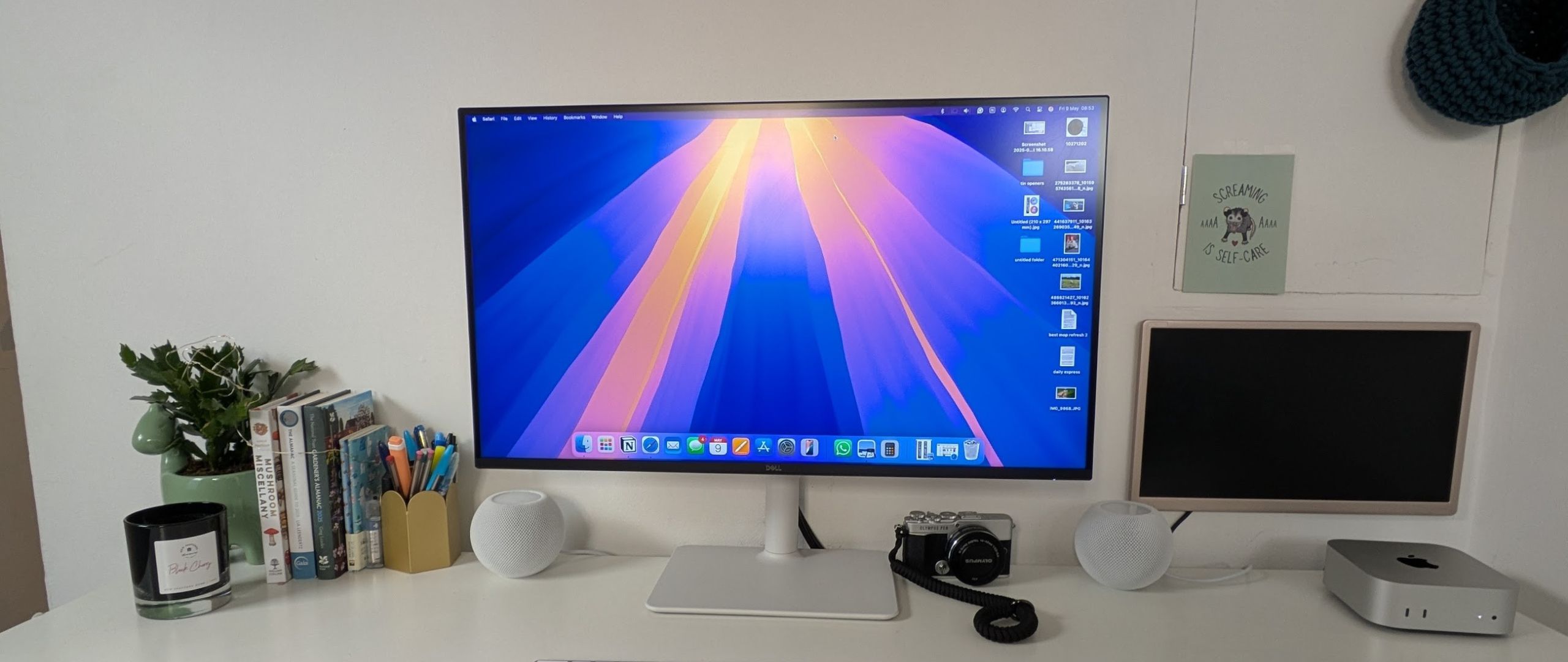Exclusive first look at Natalis trailer
Check out this truly inspirational new animated short, produced by Filmakademie Baden-Württemberg students, which uses motion-capturing and photorealistic rendering to great effect...
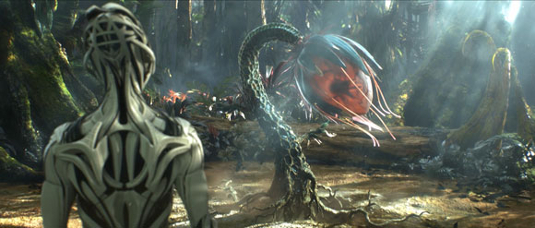
These days undergraduates have the software to create some truly spectacular shorts, and they've been taking advantage of that. We've been lucky enough to see some great student work over the last few years, and it just seems to be getting better and better...
We saw the Natalis making-of video just a few days ago and were immediately struck by it - the story looks like a winner and the animation is superb. (Scroll down to watch the making-of Natalis video and the Natalis trailer.)
We're clearly not the only ones who feel like this: Natalis is also up for the Short Film Award in the 11th VES Awards!
Watch the Natalis trailer
We caught up with the Natalis team to ask them about the new animated short:
3D World: What were the film’s influences?
Natalis Team: Natalis tells the story of the robot Ea, who is threatened by visions and fear of a devastating future. To avoid this, she has to decide about the life or death of the newborn baby creature, Enki.
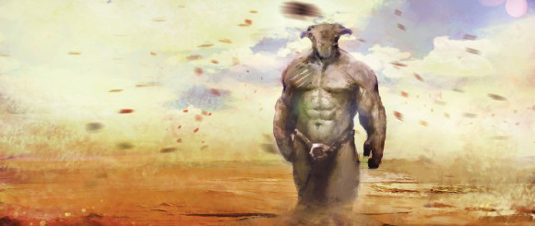
The original idea was developed by Felix Mertikat. Although Felix decided to pursue another project for his graduation, we really liked his ideas and he allowed us to take it as a base for Natalis.
Since the initial idea was too complex for us to be realized, we shortened it and developed the characters so they would still work for the story.
Inspirations were great films like Blade Runner with its humanoid Replicants, Avatar with its great creatures and various images from a few digital artists.
We liked the early designs and sketches of the creatures and the world done by Felix. It was a pleasure to work with that base and develop it further.
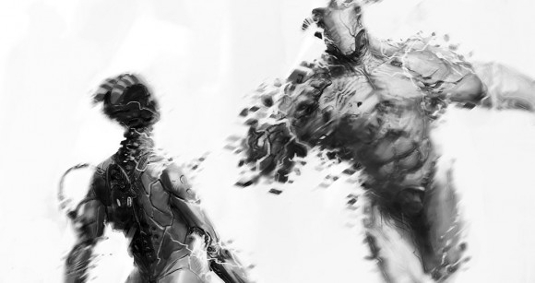
3D World: What did you do on the short and what was the hardest job?
Natalis Team: The realistic look of the film created challenges in almost every aspect of production. Me (Daniel) and Marcel were responsible for several hundred assets, including the two main characters.
Tom had to deliver a full fledged, anatomically correct muscle system with skin-sliding which was very heavily featured and required a lot of development time and anatomical study beforehand.
What turned out to be quite challenging as well was the rendering process. Karsten had to do a lot of testing and tweaks, until we were able to render our images as well as to maintain acceptable rendertimes.
David had to deal with quite heavy simulations in Houdini.
3D World: How long did the animation take to produce?
Natalis Team: We worked on the project for about one and a half years.
3D World: What 3D software did you use and why?
Watch the making of Natalis
Natalis Team: Our core software was Autodesk Maya, which was heavily customized by our TDs to maintain a good workflow. This incorporated MEL and Python scripts for data/scene management as well as C++ plug-ins for specialised deformers and other nodes.
For modeling we used various packages: Maya, 3ds Max, Sculptris, 3D Coat, Mudbox & ZBrush.
For most of the assets we made sketches in Sculptris or ZBrush, which were retopologized and finally sculpted in Mudbox or ZBrush. Texturing was almost entirely done in Mudbox, with only minor tweaking in Photoshop.
The mocap was captured and solved with Vicon IQ and the Animation was done in Maya and Motionbuilder.
Rigging and rendering was then entirely done in Maya. Most of the effects were built using Houdini and a few with Maya.

Final compositing was done in Nuke.
3D World: What was the most useful piece of 3D software and why?
Natalis Team: It is difficult to narrow it down to one piece of software, since we had such a variety of tasks. Great tools were for example Mudbox, zBrush, Houdini and also Maya, after the pipeline was running.
3D World: What was the most impressive technical aspect of the project and how was it achieved using 3D software?
Natalis Team: We created a full fledged muscle rig with muscle triggering and skinsliding using Maya Muscle and nCloth as a base.
On top of that we wrote a lot of MEL and Python scripts as well as some custom C++ plugins to tackle the creation of this heavy rig.
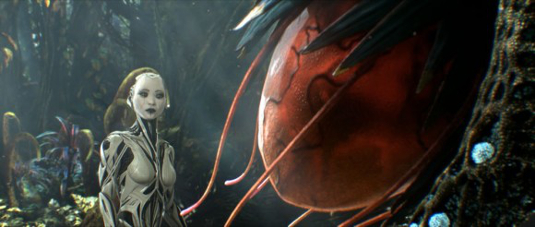
The body was split up into smaller parts to make it possible to create almost every superficial muscle in the body.
A suite of tools helped to streamline the creation of the muscles and their behaviour. Using a custom written plugin, those pieces were then stitched back together.
To ensure the best deformation for this kind of rig we used a muscle mesh, which had the muscle structure built right into the topology. This also helped a lot with weight-painting the massive amount of muscles.
A high-res mesh with a very uniform topology was used for sliding on top of the muscle mesh using nCloth.
To create realistic behavior it was also necessary that the skeleton underneath was behaving anatomically correct. Especially the scapula-, knee- and ribcage-rigs ensured proper movements. This whole process required a thorough study of the human anatomy.
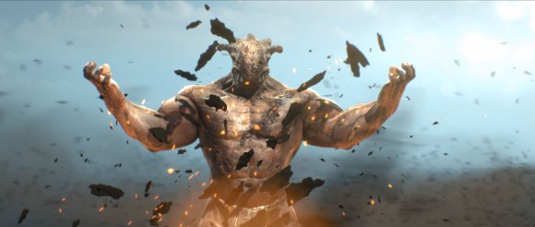
3D World: Did you do anything wrong in the production?
Natalis Team: Yes, a lot. But one of the biggest problems was that we didn’t spend enough time on the Animatic. Therefore, shots have been finalized only at a very late stage in production, which made the process longer and more difficult.
From a technical point of view, we initially considered using two different renderers - Renderman for the forest and and V-Ray for the characters - but halfway through production we realized it would have been too much work to develop a good pipeline for both.
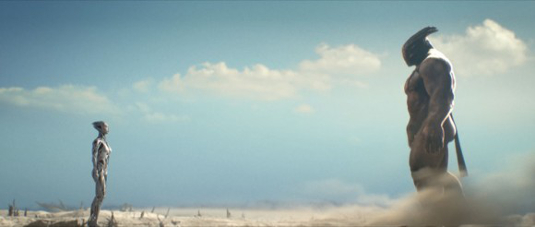
3D World: Did you learn anything from producing Natalis?
Natalis Team: One of the most important aspects for the success of the project was our structured pipeline, developed by Karsten and Tom.
We invested a lot of time in its development. This ensured we were able to focus on the artistic side without having to worry about file management and other technical aspects.
In the beginning it was a bit daunting when initially there did not seem to be much progress. But coming closer to the end of the project the reward was that all went really fast. A lot could be finished in a short time whilst really pushing the quality.
3D World: Did you use or develop any new or notable techniques?
Natalis Team: We started a co-operation with EPFL in Lausanne where a technique called Face/off: Live facial puppetry was developed.
It was also published as a Siggraph paper in 2009 and was the predecessor of Face Shift. We used this technique to do markerless facial capturing (separate from the body motion capture).
Basically, it captures 3D geometry with structured light scanning in real-time and then tries to fit a predefined geometry to those scans. In this way we got an animated consistent geometry which then built the base for our blendshape animation system.
3D World: What are you up to now?
Natalis Team: We have finished our studies and we are now working for different visual effects companies. Three of us are working for Framestore, one for MPC and two for Pixomondo.
Thanks for the interview Team Natalis. We simply can't wait to see the full short. All the best with the VES award too.
More cool animated shorts
If you liked this, you may like to see the following animations...
Monsterbox is a gorgeous animated short produced by four graduates from Bellecour Ecoles d’Art… Take five minutes out of your day to watch the film. You won’t be disappointed…
And there's the masterful student short, A Fox Tale, too!
The creators of A Fox Tale also provide some useful insights into character design in issue 161 of 3D World.
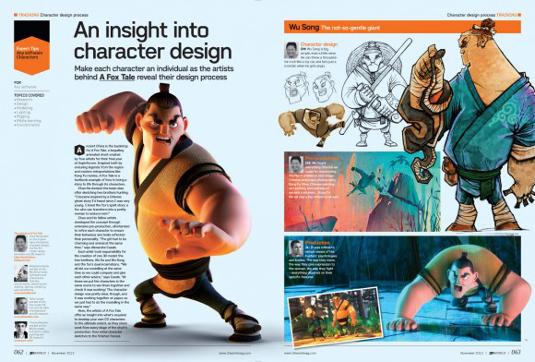

Thank you for reading 5 articles this month* Join now for unlimited access
Enjoy your first month for just £1 / $1 / €1
*Read 5 free articles per month without a subscription

Join now for unlimited access
Try first month for just £1 / $1 / €1
Get the Creative Bloq Newsletter
Daily design news, reviews, how-tos and more, as picked by the editors.

The Creative Bloq team is made up of a group of art and design enthusiasts, and has changed and evolved since Creative Bloq began back in 2012. The current website team consists of eight full-time members of staff: Editor Georgia Coggan, Deputy Editor Rosie Hilder, Ecommerce Editor Beren Neale, Senior News Editor Daniel Piper, Editor, Digital Art and 3D Ian Dean, Tech Reviews Editor Erlingur Einarsson, Ecommerce Writer Beth Nicholls and Staff Writer Natalie Fear, as well as a roster of freelancers from around the world. The ImagineFX magazine team also pitch in, ensuring that content from leading digital art publication ImagineFX is represented on Creative Bloq.
